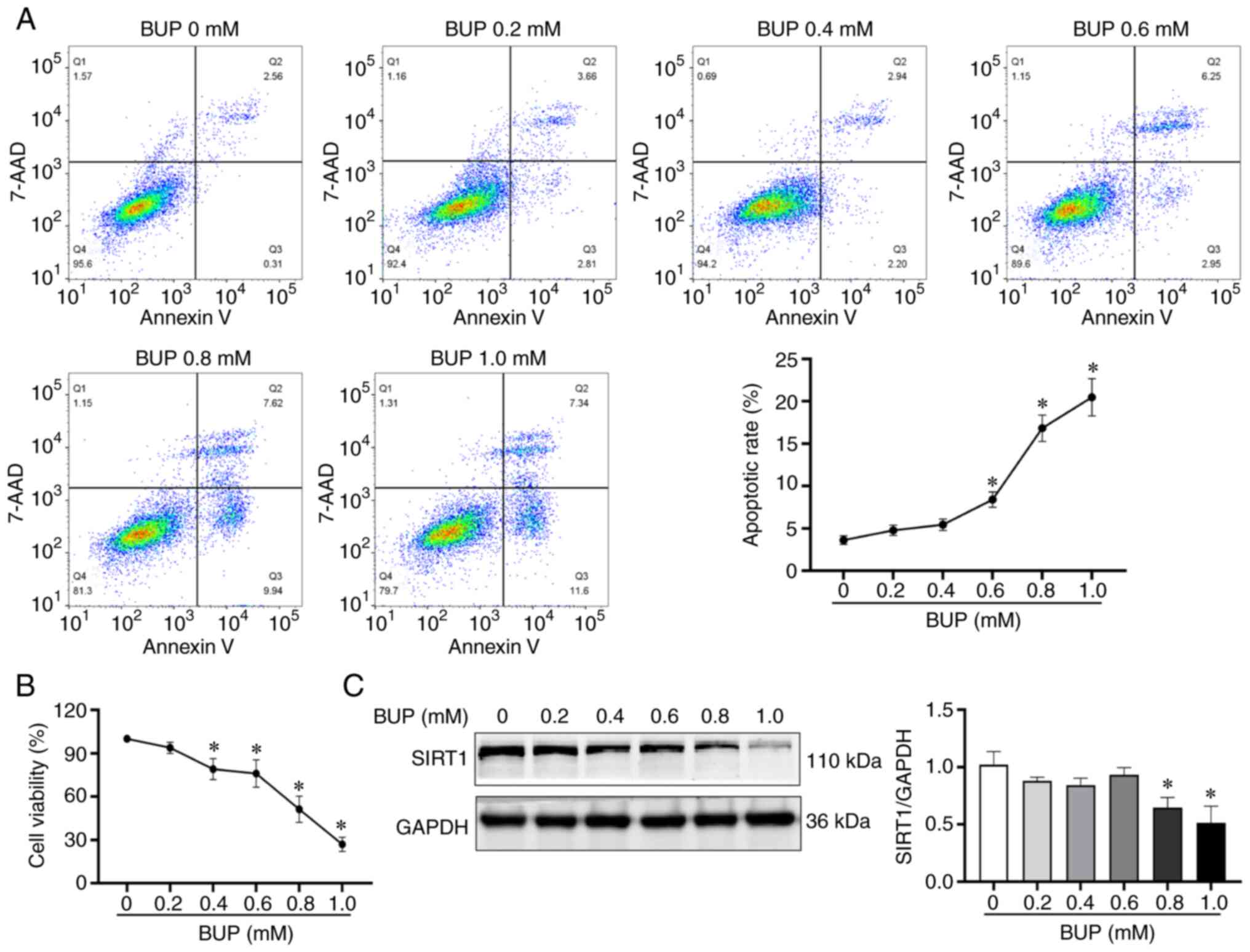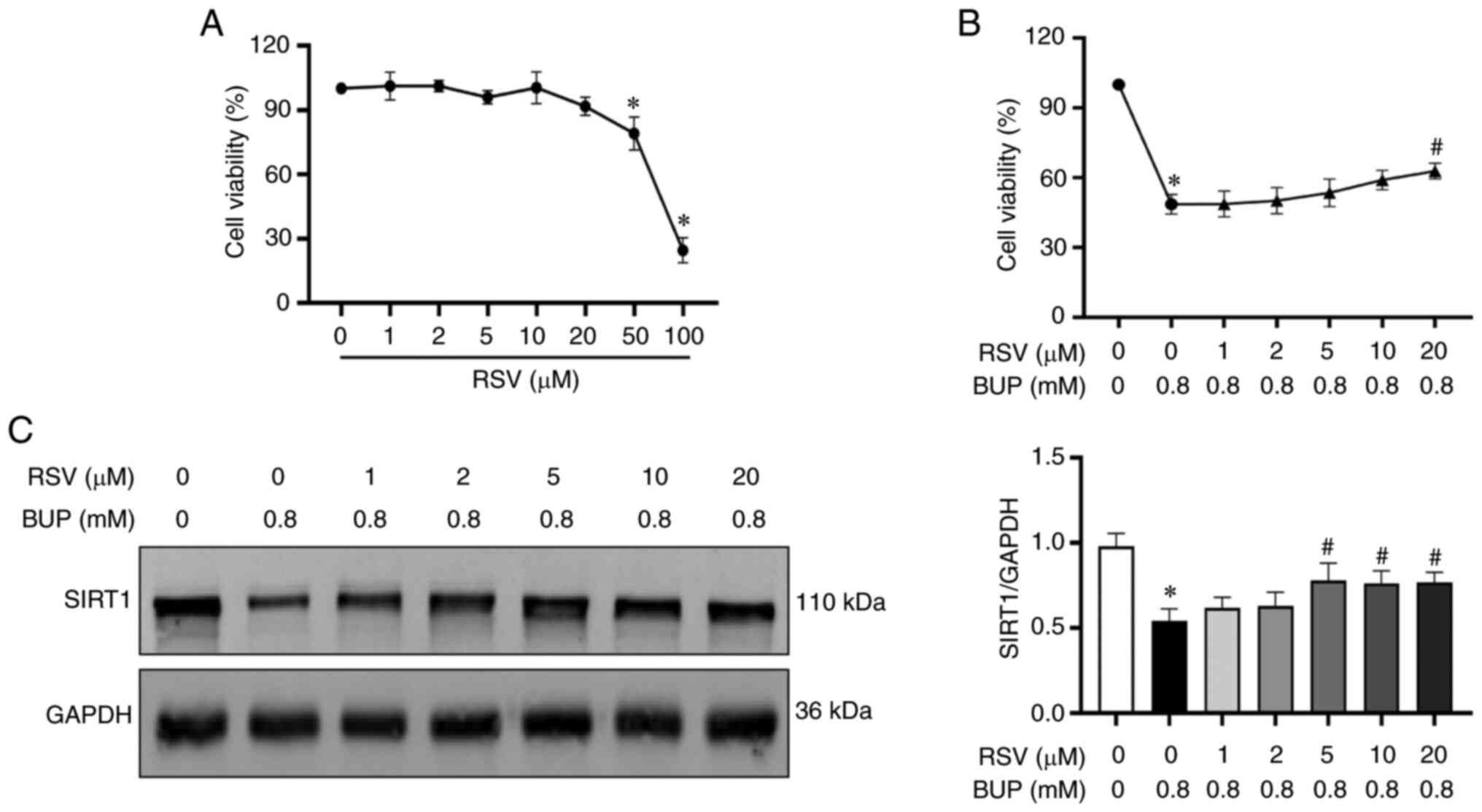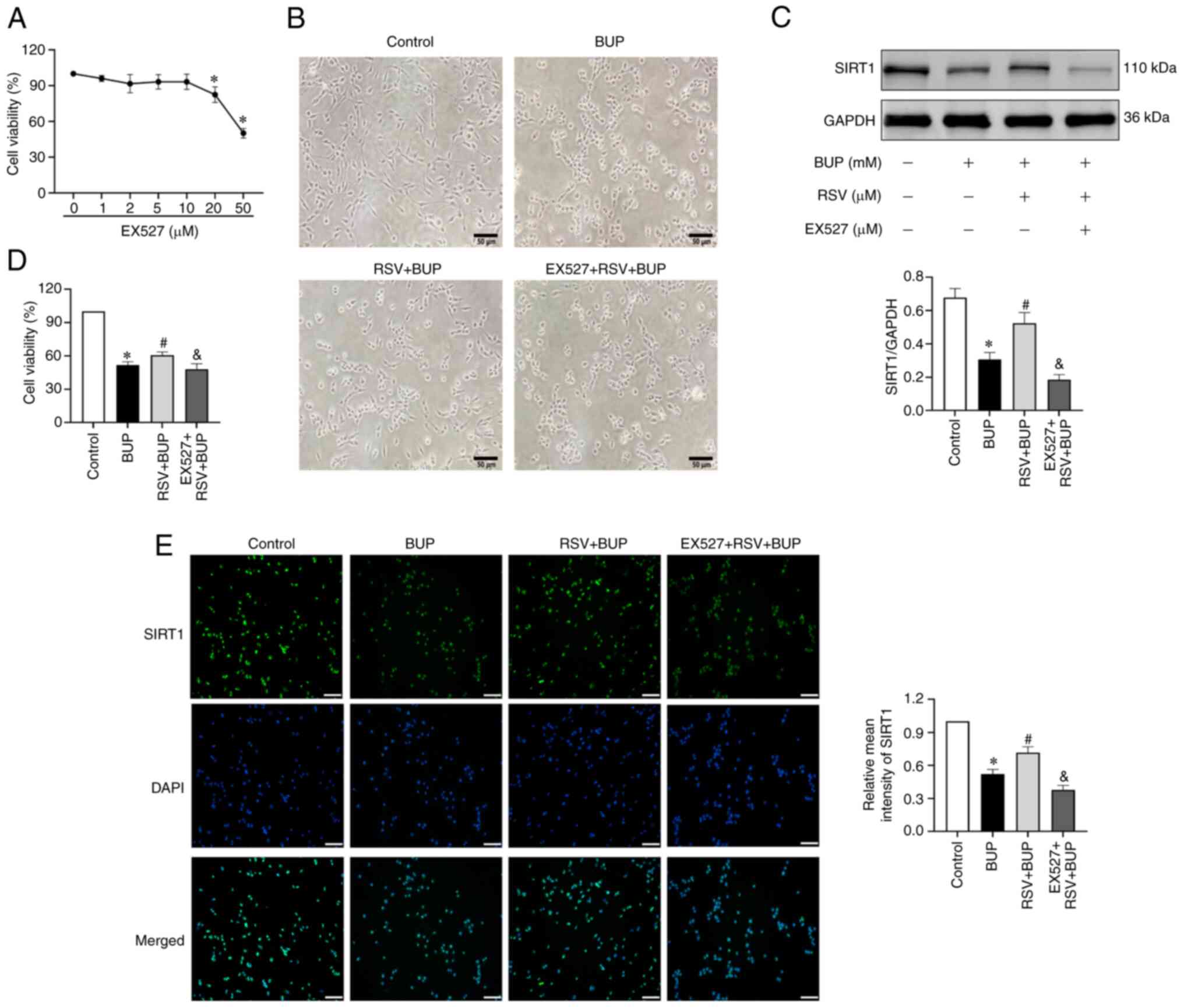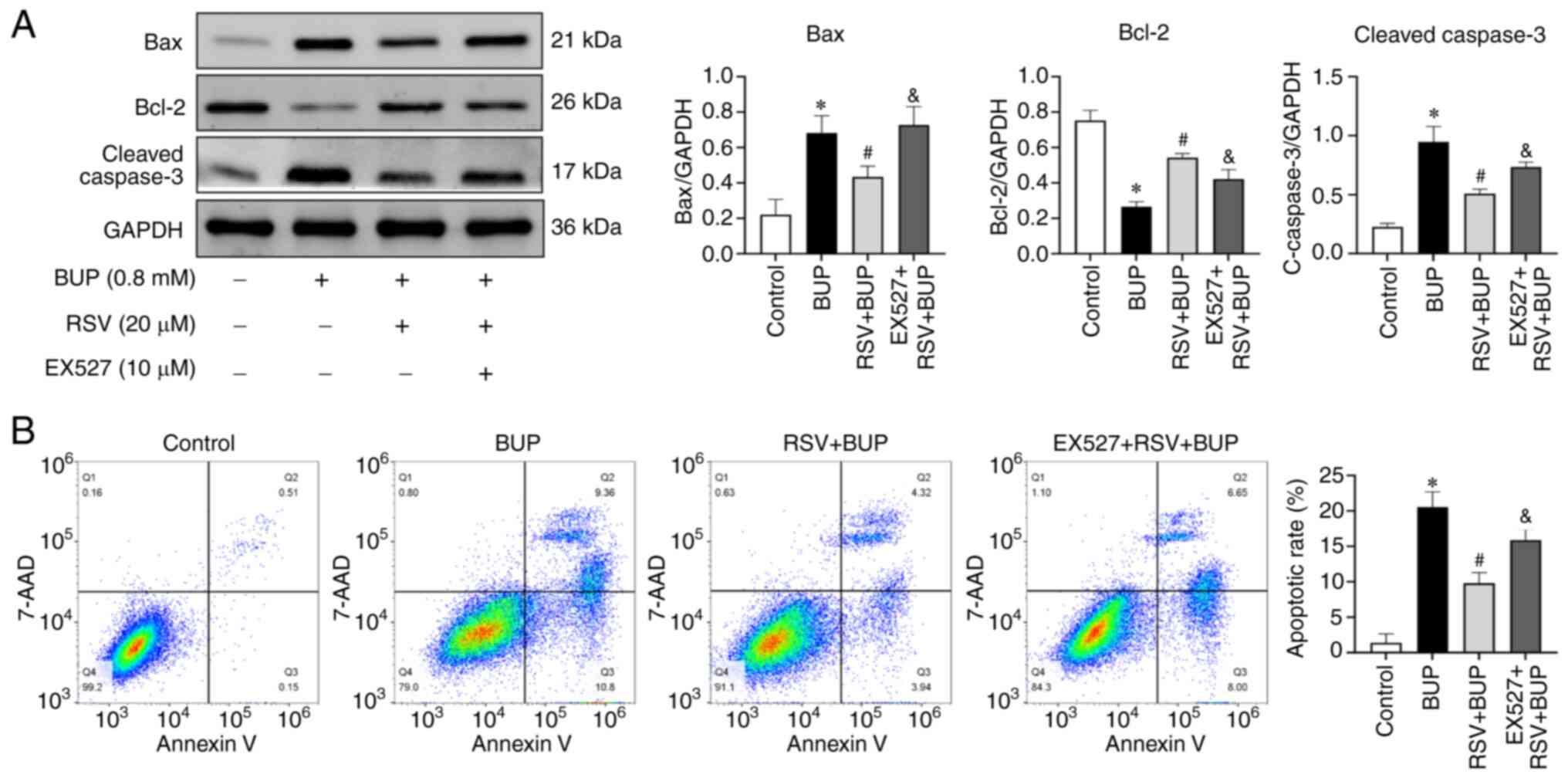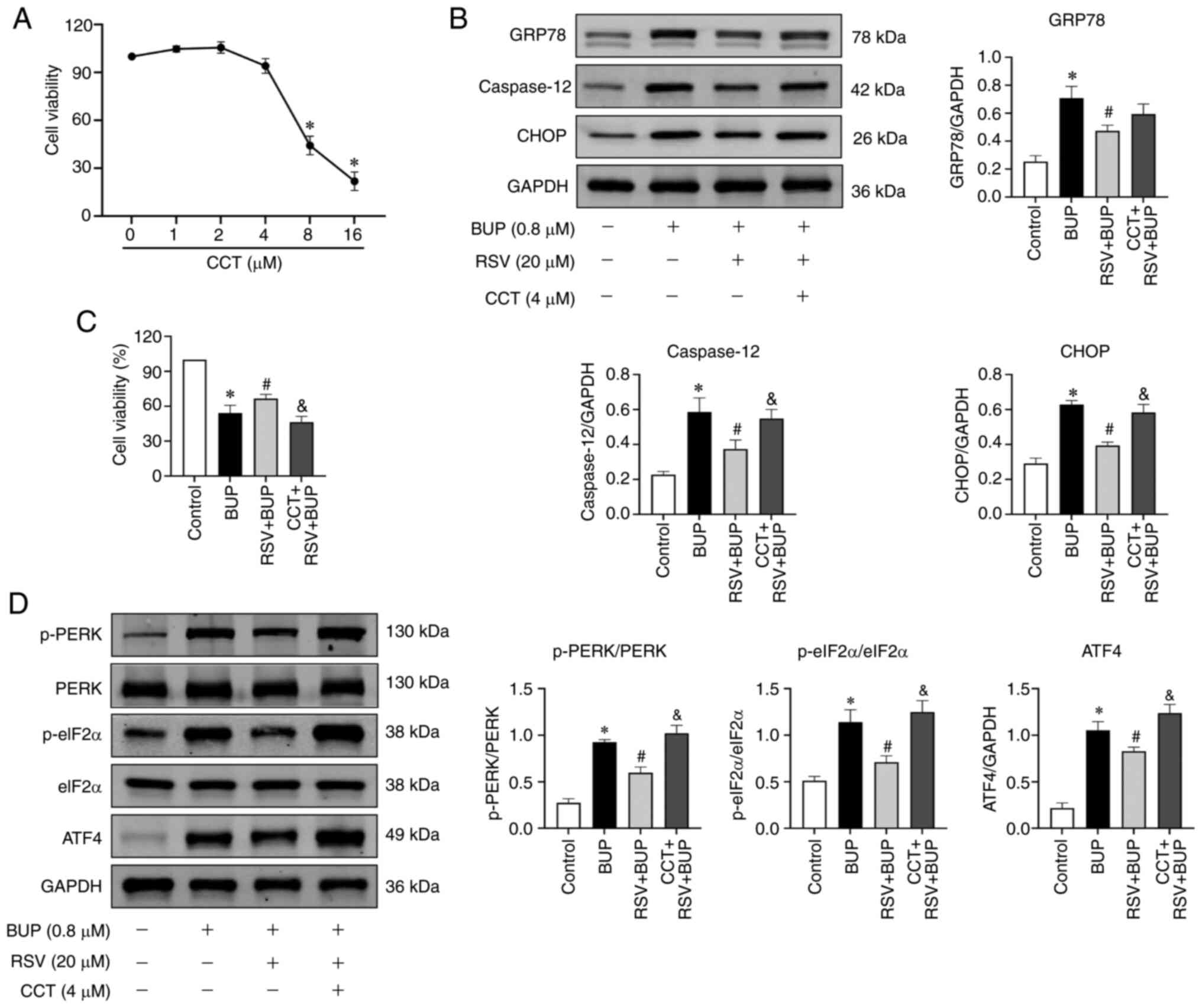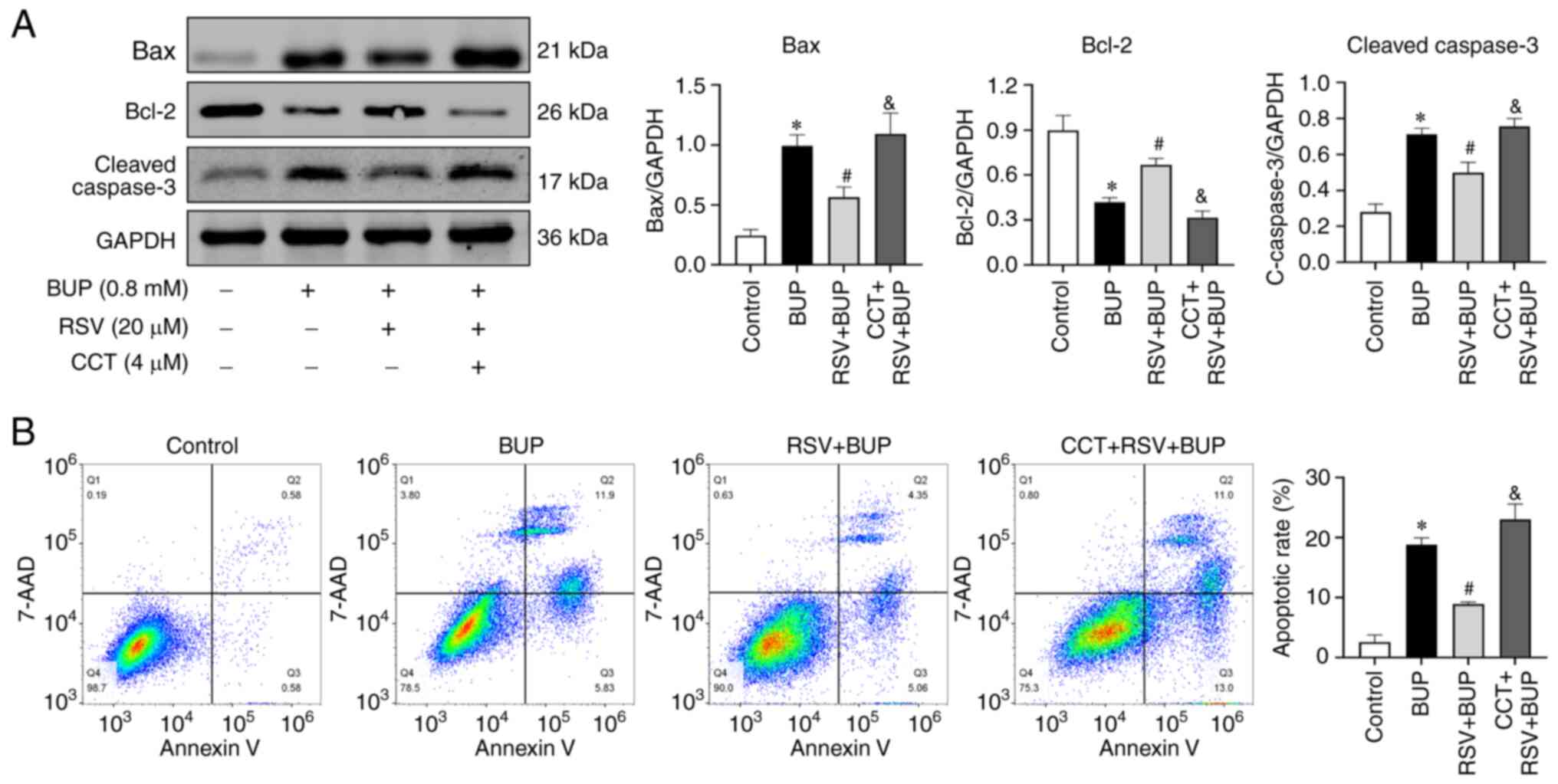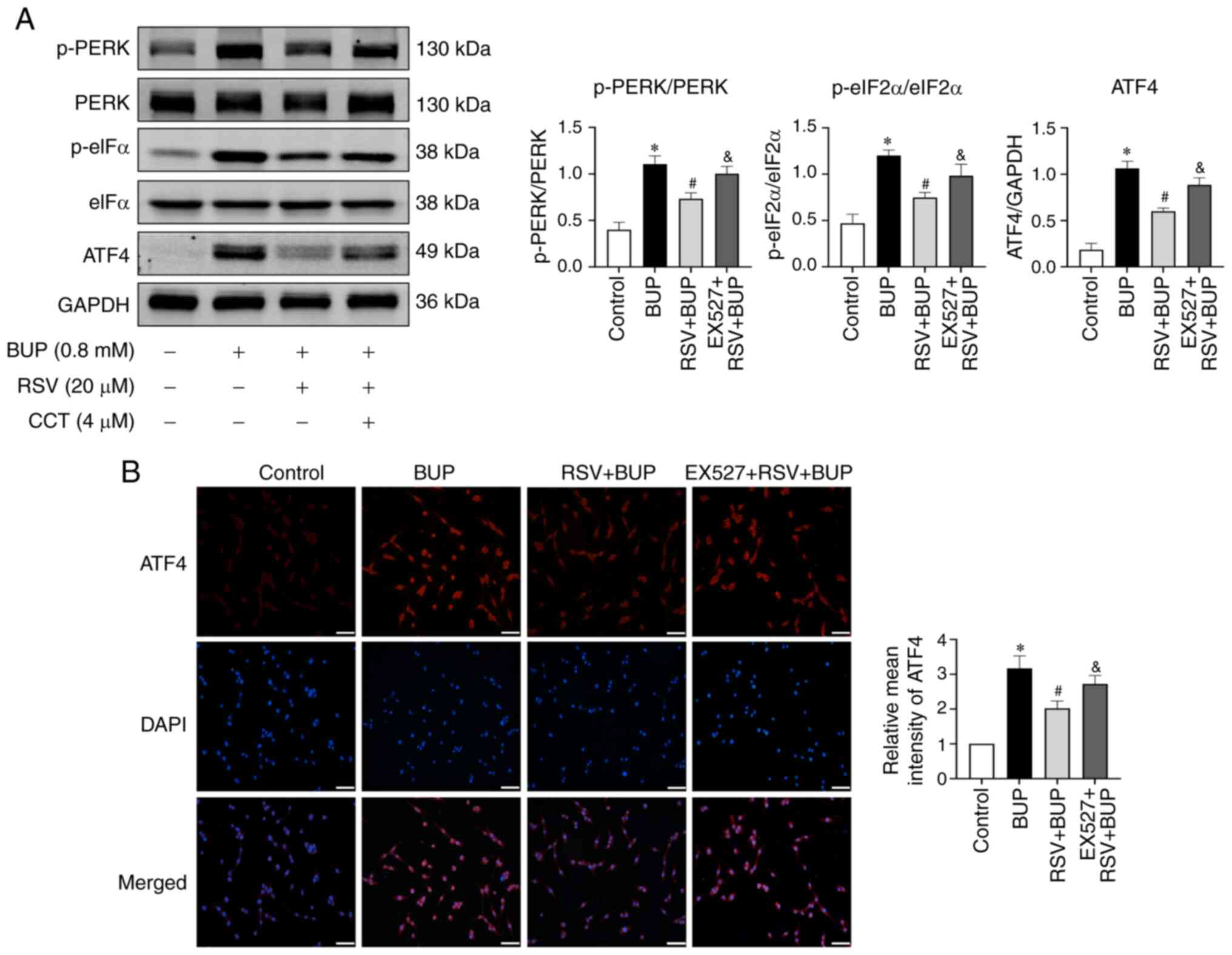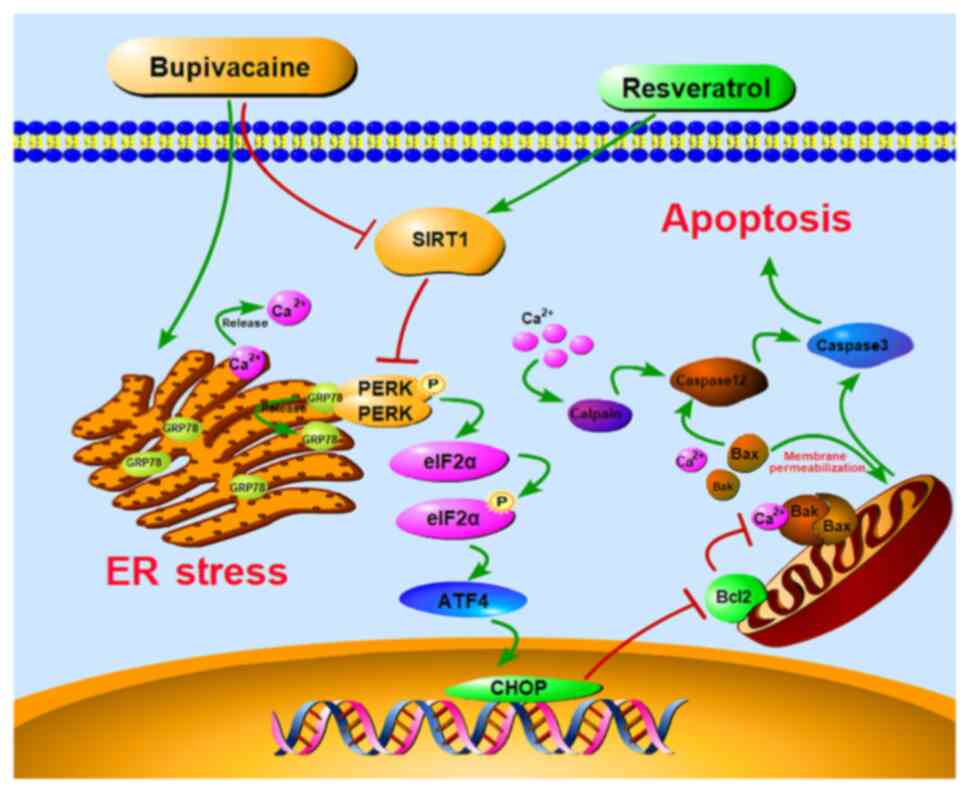|
1
|
Chen X, Xu Z, Lin R and Liu Z: Persistent
cauda equina syndrome after cesarean section under combined
spinal-epidural anesthesia: A case report. J Clin Anesth.
27:520–523. 2015.PubMed/NCBI View Article : Google Scholar
|
|
2
|
Ji J, Yan X, Li Z, Lai Z and Liu J:
Therapeutic effects of intrathecal versus intravenous
monosialoganglioside against bupivacaine-induced spinal
neurotoxicity in rats. Biomed Pharmacother. 69:311–316.
2015.PubMed/NCBI View Article : Google Scholar
|
|
3
|
Lai J, Ji JM, Chen MY, Luo YP, Yu Y, Zhou
G, Wei LL, Huang LS and Liu JC: Melatonin ameliorates
bupivacaine-induced spinal neurotoxicity in rats by suppressing
neuronal NLRP3 inflammasome activation. Neurosci Lett.
772(136472)2022.PubMed/NCBI View Article : Google Scholar
|
|
4
|
Zhao Y, Luo Y, Liu Z, Chen Y, Wei L, Luo
X, Zhou G, Lai J, Ji J, Lin Y and Liu J: Ferrostatin-1 ameliorates
bupivacaine-induced spinal neurotoxicity in rats by inhibiting
ferroptosis. Neurosci Lett. 809(137308)2023.PubMed/NCBI View Article : Google Scholar
|
|
5
|
Marciniak SJ, Chambers JE and Ron D:
Pharmacological targeting of endoplasmic reticulum stress in
disease. Nat Rev Drug Discov. 21:115–140. 2022.PubMed/NCBI View Article : Google Scholar
|
|
6
|
Ghemrawi R and Khair M: Endoplasmic
reticulum stress and unfolded protein response in neurodegenerative
diseases. Int J Mol Sci. 21(6127)2020.PubMed/NCBI View Article : Google Scholar
|
|
7
|
Hetz C, Zhang K and Kaufman RJ:
Mechanisms, regulation and functions of the unfolded protein
response. Nat Rev Mol Cell Biol. 21:421–438. 2020.PubMed/NCBI View Article : Google Scholar
|
|
8
|
Li L, Zhang QG, Lai LY, Wen XJ, Zheng T,
Cheung CW, Zhou SQ and Xu SY: Neuroprotective effect of ginkgolide
B on bupivacaine-induced apoptosis in SH-SY5Y cells. Oxid Med Cell
Longev. 2013(159864)2013.PubMed/NCBI View Article : Google Scholar
|
|
9
|
Liang Y, Ji J, Lin Y, He Y and Liu J: The
Ganglioside GM-1 inhibits bupivacaine-induced neurotoxicity in
mouse neuroblastoma Neuro2a cells. Cell Biochem Funct. 34:455–462.
2016.PubMed/NCBI View
Article : Google Scholar
|
|
10
|
Liu B, Ji J, Feng Q, Luo X, Yan X, Ni Y,
He Y, Mao Z and Liu J: Monosialoganglioside protects against
bupivacaine-induced neurotoxicity caused by endoplasmic reticulum
stress in rats. Drug Des Devel Ther. 13:707–718. 2019.PubMed/NCBI View Article : Google Scholar
|
|
11
|
Liu H, Xu S, Wang C, Deng Y, Xu B, Yang T,
Sun J and Liu W: The beneficial role of sirtuin 1 in preventive or
therapeutic options of neurodegenerative diseases. Neuroscience.
504:79–92. 2022.PubMed/NCBI View Article : Google Scholar
|
|
12
|
Tang BL and Chua CE: SIRT1 and neuronal
diseases. Mol Aspects Med. 29:187–200. 2008.PubMed/NCBI View Article : Google Scholar
|
|
13
|
Fangma Y, Wan H, Shao C, Jin L and He Y:
Research progress on the role of sirtuin 1 in cerebral ischemia.
Cell Mol Neurobiol. 43:1769–1783. 2023.PubMed/NCBI View Article : Google Scholar
|
|
14
|
Yu X, Zhang S, Zhao D, Zhang X, Xia C,
Wang T, Zhang M, Liu T, Huang W and Wu B: SIRT1 inhibits apoptosis
in in vivo and in vitro models of spinal cord injury
via microRNA-494. Int J Mol Med. 43:1758–1768. 2019.PubMed/NCBI View Article : Google Scholar
|
|
15
|
Zheng LN, Guo FQ, Li ZS, Wang Z, Ma JH,
Wang T, Wei JF and Zhang WW: Dexmedetomidine protects against
lidocaine-induced neurotoxicity through SIRT1
downregulation-mediated activation of FOXO3a. Hum Exp Toxicol.
39:1213–1223. 2020.PubMed/NCBI View Article : Google Scholar
|
|
16
|
Wang X, Yuan B, Cheng B, Liu Y, Zhang B,
Wang X, Lin X, Yang B and Gong G: Crocin alleviates myocardial
ischemia/reperfusion-induced endoplasmic reticulum stress via
regulation of miR-34a/Sirt1/Nrf2 pathway. Shock. 51:123–130.
2019.PubMed/NCBI View Article : Google Scholar
|
|
17
|
Li YP, Wang SL, Liu B, Tang L, Kuang RR,
Wang XB, Zhao C, Song XD, Cao XM, Wu X, et al: Sulforaphane
prevents rat cardiomyocytes from hypoxia/reoxygenation injury in
vitro via activating SIRT1 and subsequently inhibiting ER stress.
Acta Pharmacol Sin. 37:344–353. 2016.PubMed/NCBI View Article : Google Scholar
|
|
18
|
Zheng X, Xu F, Liang H, Cao H, Cai M, Xu W
and Weng J: SIRT1/HSF1/HSP pathway is essential for
exenatide-alleviated, lipid-induced hepatic endoplasmic reticulum
stress. Hepatology. 66:809–824. 2017.PubMed/NCBI View Article : Google Scholar
|
|
19
|
He B, Zhang W, Qiao J, Peng Z and Chai X:
Melatonin protects against COPD by attenuating apoptosis and
endoplasmic reticulum stress via upregulating SIRT1 expression in
rats. Can J Physiol Pharmacol. 97:386–391. 2019.PubMed/NCBI View Article : Google Scholar
|
|
20
|
Melhem H, Hansmannel F, Bressenot A,
Battaglia-Hsu SF, Billioud V, Alberto JM, Gueant JL and
Peyrin-Biroulet L: Methyl-deficient diet promotes colitis and
SIRT1-mediated endoplasmic reticulum stress. Gut. 65:595–606.
2016.PubMed/NCBI View Article : Google Scholar
|
|
21
|
Kang X, Yang W, Wang R, Xie T, Li H, Feng
D, Jin X, Sun H and Wu S: Sirtuin-1 (SIRT1) stimulates growth-plate
chondrogenesis by attenuating the PERK-eIF-2α-CHOP pathway in the
unfolded protein response. J Biol Chem. 293:8614–8625.
2018.PubMed/NCBI View Article : Google Scholar
|
|
22
|
Shaito A, Posadino AM, Younes N, Hasan H,
Halabi S, Alhababi D, Al-Mohannadi A, Abdel-Rahman WM, Eid AH,
Nasrallah GK and Pintus G: Potential adverse effects of
resveratrol: A literature review. Int J Mol Sci.
21(2084)2020.PubMed/NCBI View Article : Google Scholar
|
|
23
|
Luo Y, Zhao Y, Lai J, Wei L, Zhou G, Yu Y
and Liu J: Resveratrol suppresses bupivacaine-induced spinal
neurotoxicity in rats by inhibiting endoplasmic reticulum stress
via SIRT1 modulation. Biomed Res Int. 2023(1176232)2023.PubMed/NCBI View Article : Google Scholar
|
|
24
|
Fan X, Bian W, Liu M, Li J and Wang Y:
MiRNA-429 alleviates ketamine-induced neurotoxicity through
targeting BAG5. Environ Toxicol. 36:620–627. 2021.PubMed/NCBI View Article : Google Scholar
|
|
25
|
Hao R, Ge J, Song X, Li F, Sun-Waterhouse
D and Li D: Cadmium induces ferroptosis and apoptosis by modulating
miR-34a-5p/Sirt1axis in PC12 cells. Environ Toxicol. 37:41–51.
2022.PubMed/NCBI View Article : Google Scholar
|
|
26
|
Shayan M, Mehri S, Razavi BM and
Hosseinzadeh H: Minocycline protects PC12 cells against
cadmium-induced neurotoxicity by modulating apoptosis. Biol Trace
Elem Res. 201:1946–1954. 2023.PubMed/NCBI View Article : Google Scholar
|
|
27
|
Tang XP, Guo XH, Geng D and Weng LJ:
d-Limonene protects PC12 cells against corticosterone-induced
neurotoxicity by activating the AMPK pathway. Environ Toxicol
Pharmacol. 70(103192)2019.PubMed/NCBI View Article : Google Scholar
|
|
28
|
Zhang Y, He Y, Deng N, Chen Y, Huang J and
Xie W: Protective effect of resveratrol against
corticosterone-induced neurotoxicity in PC12 cells. Transl
Neurosci. 10:235–240. 2019.PubMed/NCBI View Article : Google Scholar
|
|
29
|
Yang Z, Hu S, He Y and Ji L: LINC00665
rescues bupivacaine induced neurotoxicity in human neural cell of
SH-SY5Y through has-miR-34a-5p. Brain Res Bull. 177:210–216.
2021.PubMed/NCBI View Article : Google Scholar
|
|
30
|
Jęśko H, Wencel P, Strosznajder RP and
Strosznajder JB: Sirtuins and their roles in brain aging and
neurodegenerative disorders. Neurochem Res. 42:876–890.
2017.PubMed/NCBI View Article : Google Scholar
|
|
31
|
Zhang Y, Li T, Pan M, Wang W, Huang W,
Yuan Y, Xie Z, Chen Y, Peng J, Li X and Meng Y: SIRT1 prevents
cigarette smoking-induced lung fibroblasts activation by regulating
mitochondrial oxidative stress and lipid metabolism. J Transl Med.
20(222)2022.PubMed/NCBI View Article : Google Scholar
|
|
32
|
Ren Q, Hu Z, Jiang Y, Tan X, Botchway BOA,
Amin N, Lin G, Geng Y and Fang M: SIRT1 protects against apoptosis
by promoting autophagy in the oxygen glucose
deprivation/reperfusion-induced injury. Front Neurol.
10(1289)2019.PubMed/NCBI View Article : Google Scholar
|
|
33
|
Jiao F and Gong Z: The beneficial roles of
SIRT1 in neuroinflammation-related diseases. Oxid Med Cell Longev.
2020(6782872)2020.PubMed/NCBI View Article : Google Scholar
|
|
34
|
Chen H, Lin X, Yi X, Liu X, Yu R, Fan W,
Ling Y, Liu Y and Xie W: SIRT1-mediated p53 deacetylation inhibits
ferroptosis and alleviates heat stress-induced lung epithelial
cells injury. Int J Hyperthermia. 39:977–986. 2022.PubMed/NCBI View Article : Google Scholar
|
|
35
|
Chen L, Li S, Zhu J, You A, Huang X, Yi X
and Xue M: Mangiferin prevents myocardial infarction-induced
apoptosis and heart failure in mice by activating the Sirt1/FoxO3a
pathway. J Cell Mol Med. 25:2944–2955. 2021.PubMed/NCBI View Article : Google Scholar
|
|
36
|
Kaewmool C, Kongtawelert P, Phitak T,
Pothacharoen P and Udomruk S: Protocatechuic acid inhibits
inflammatory responses in LPS-activated BV2 microglia via
regulating SIRT1/NF-κB pathway contributed to the suppression of
microglial activation-induced PC12 cell apoptosis. J Neuroimmunol.
341(577164)2020.PubMed/NCBI View Article : Google Scholar
|
|
37
|
Mao H, Wang L, Xiong Y, Jiang G and Liu X:
Fucoxanthin attenuates oxidative damage by activating the
Sirt1/Nrf2/HO-1 signaling pathway to protect the kidney from
ischemia-reperfusion injury. Oxid Med Cell Longev.
2022(7444430)2022.PubMed/NCBI View Article : Google Scholar
|
|
38
|
Wang F, Ma J, Wang J, Chen M, Xia H, Yao S
and Zhang D: SIRT1 ameliorated septic associated-lung injury and
macrophages apoptosis via inhibiting endoplasmic reticulum stress.
Cell Signal. 97(110398)2022.PubMed/NCBI View Article : Google Scholar
|
|
39
|
Wang H, Dong X, Liu Z, Zhu S, Liu H, Fan
W, Hu Y, Hu T, Yu Y, Li Y, et al: Resveratrol suppresses
rotenone-induced neurotoxicity through activation of SIRT1/Akt1
signaling pathway. Anat Rec (Hoboken). 301:1115–1125.
2018.PubMed/NCBI View
Article : Google Scholar
|
|
40
|
Tang X, Zhao Y, Zhou Z, Yan J, Zhou B, Chi
X, Luo A and Li S: Resveratrol mitigates sevoflurane-induced
neurotoxicity by the SIRT1-dependent regulation of BDNF expression
in developing mice. Oxid Med Cell Longev.
2020(9018624)2020.PubMed/NCBI View Article : Google Scholar
|
|
41
|
Bai L, Liu R, Wang R, Xin Y, Wu Z, Ba Y,
Zhang H, Cheng X, Zhou G and Huang H: Attenuation of Pb-induced Aβ
generation and autophagic dysfunction via activation of SIRT1:
Neuroprotective properties of resveratrol. Ecotoxicol Environ Saf.
222(112511)2021.PubMed/NCBI View Article : Google Scholar
|
|
42
|
Gomes BAQ, Silva JPB, Romeiro CFR, Dos
Santos SM, Rodrigues CA, Gonçalves PR, Sakai JT, Mendes PFS, Varela
ELP and Monteiro MC: Neuroprotective mechanisms of resveratrol in
Alzheimer's disease: Role of SIRT1. Oxid Med Cell Longev.
2018(8152373)2018.PubMed/NCBI View Article : Google Scholar
|
|
43
|
Li L, Ye XP, Lu AZ, Zhou SQ, Liu H, Liu
ZJ, Jiang S and Xu SY: Hyperglycemia magnifies bupivacaine-induced
cell apoptosis triggered by mitochondria dysfunction and
endoplasmic reticulum stress. J Neurosci Res. 91:786–798.
2013.PubMed/NCBI View Article : Google Scholar
|
|
44
|
Iurlaro R and Muñoz-Pinedo C: Cell death
induced by endoplasmic reticulum stress. FEBS J. 283:2640–2652.
2016.PubMed/NCBI View Article : Google Scholar
|
|
45
|
Zhang X, Jiang L, Chen H, Wei S, Yao K,
Sun X, Yang G, Jiang L, Zhang C, Wang N, et al: Resveratrol
protected acrolein-induced ferroptosis and insulin secretion
dysfunction via ER-stress-related PERK pathway in MIN6 cells.
Toxicology. 465(153048)2022.PubMed/NCBI View Article : Google Scholar
|
|
46
|
Shati AA: Resveratrol protects against
cadmium chloride-induced hippocampal neurotoxicity by inhibiting ER
stress and GAAD 153 and activating sirtuin 1/AMPK/Akt. Environ
Toxicol. 34:1340–1353. 2019.PubMed/NCBI View Article : Google Scholar
|
|
47
|
Zhu H, Li X, Qiao M, Sun X and Li G:
Resveratrol alleviates inflammation and ER stress through
SIRT1/NRF2 to delay ovarian aging in a short-lived fish. J Gerontol
A Biol Sci Med Sci. 78:596–602. 2023.PubMed/NCBI View Article : Google Scholar
|
|
48
|
Chou X, Ding F, Zhang X, Ding X, Gao H and
Wu Q: Sirtuin-1 ameliorates cadmium-induced endoplasmic reticulum
stress and pyroptosis through XBP-1s deacetylation in human renal
tubular epithelial cells. Arch Toxicol. 93:965–986. 2019.PubMed/NCBI View Article : Google Scholar
|
|
49
|
Zhang Y, He L, Tu M, Huang M, Chen Y, Pan
D, Peng J and Shen X: The ameliorative effect of terpinen-4-ol on
ER stress-induced vascular calcification depends on SIRT1-mediated
regulation of PERK acetylation. Pharmacol Res.
170(105629)2021.PubMed/NCBI View Article : Google Scholar
|
|
50
|
Prola A, Pires Da Silva J, Guilbert A,
Lecru L, Piquereau J, Ribeiro M, Mateo P, Gressette M, Fortin D,
Boursier C, et al: SIRT1 protects the heart from ER stress-induced
cell death through eIF2α deacetylation. Cell Death Differ.
24:343–356. 2017.PubMed/NCBI View Article : Google Scholar
|



